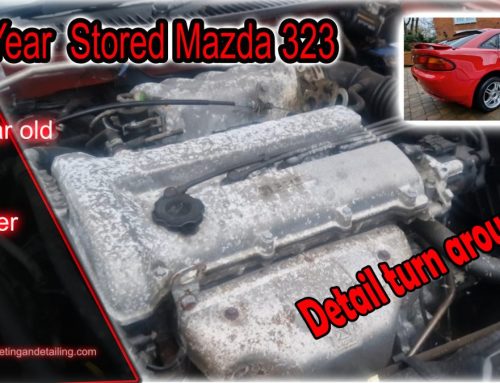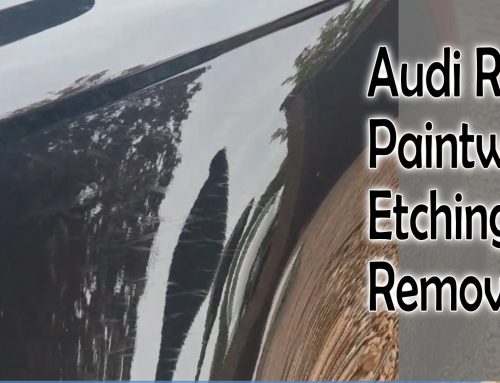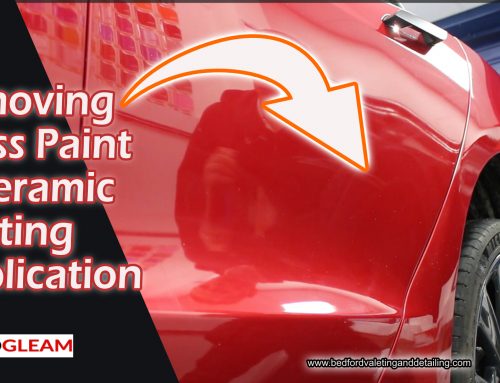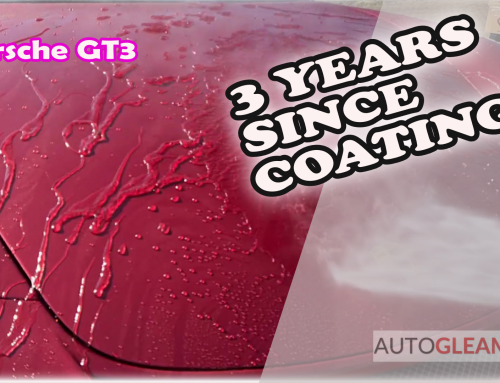What is the difference between valeting & detailing?
The car cleaning industry seems to be muddling and confusing potential customers with labelling services they are providing. So let’s try create some clarity to marry expectations to end results.
Valeting and detailing Phrases
Phrases such as ‘correction detail’, ‘enhancement detail’, ‘car valeting’ and ‘car detailing’ can make it difficult for a potential client to really know what they are getting or indeed what they actually want.
The source of the problem is interpretations of phrases by operations, when in reality the descriptive is potentially or indeed intentionally used to sex up a service. However we are only talking exactly that, a ‘phrase’.
It could be likely if you spoke to an experienced ‘vehicle appearance enhancement technician’, (ie a car cleaner), would describe an average valet as….well a valet. It could also be likely that a reasonably new ‘vehicle appearance enhancement technician’ would describe the same service as ‘maintenance detail‘.
Is there an issue with this? Well possibly not. But the issue arises when the client is seeking education or trying source a service which fits their particular budget and he/she gets confusing conflicts in their findings.
The actual phrase ‘detail’ originates from America and it does really have a completely different meaning in it’s home country rather than the UK. If you ask an American to ‘valet’ your car then he’ll probably go and park your car in the car park for you.
Quite ironic really when the phrase ‘valet’ we Brits use is actually French, roughly translating as mans servant or attendant who is responsible for his appearance.
What is a car detail?
So probably the best way to describe a ‘Detail’ is to explain what you as a customer would receive as a car valet. There are several processes which are the same or very similar in valeting as to detailing and that starts with the ‘safe wash’ process. The dynamics of a ‘safe wash’ are to clean dirt and debris off clear coats and painted surfaces with minimal friction using chemicals friendly to automotive surfaces.
This can be completed in a few different ways, none of which are right or wrong, just a preference for the individual resulting in the same goal.
Heavily soiled areas are treated to pre wash spray with a low chemical dilution ratio. Such areas as wheel arches, sills, wheels, door shuts and lower parts of the vehicle receive a higher dilution of chemical for purposes of high soiling or surface composition.
Snow foam is then applied via a lance attached to a pressure washer trigger. The foam is designed to cling to the bodywork whilst being left to dwell allowing traffic film to be power washed off.
The importance of the chemical used for this task is high up the list of concerns and ramifications. The assigned product has to tick the boxes of powerful enough to remove dirt, gentle enough not tarnish trim and have minimum effect upon LSP (last stage product). LSP could be apparent in the form of polymers or coatings. In other words, waxes, sealants and potentially coatings.
The requirements for this to fit is a ph neutral or at least a alkali non caustic make up material based product.
Two Bucket Wash System for Valeting & Detailing
We now move onto the bucket wash system. A two or three bucket cleansing system is used when the physical side of washing the vehicle down is implemented. A bucket containing reactivating wash and wax or a super slick high foaming wash shampoo is held in one bucket, whilst a second bucket holds fresh clean water to rinse the super soft wash mitt used to clean your car. The mitt is regularly rinsed to minimise the possible infliction of dirt/grit rubbing into clear coats. The buckets contain corrugated grit guards to assist in removing such hazards where they then sit at the bottom of the bucket out of harm’s way. A third bucket is sometimes used for wheel cleaning alone.
Once the vehicle is rinsed clear of all dirt and wash suds or potential spray sealant additives, a super soft drying towel soaks up the remaining water on the car. An option prior to drying towels process, in some cases is to use a QD (quick detailer spray) as a drying aid to lubricate for less friction within this process aimed at once again minimising clear coat damage.
Our cars interior is vacuumed including all seats, carpet areas, boot, floor mats, door pockets and all-around instruments and gear levers. Steering wheel, door cards, dash stalks and pedals are cleaned chemically. Bolsters on seats are gently stretched open to get to the ingrained dirt captured in the tight upholstery’s crevasses.
Windows are dropped to clean the ‘dirty line’ that adheres to the area of glass seated in the rubber upon closed position. Tyres are dressed and the windows are cleaned inside and out.
This process is what you should expect from a basic valet. Other parts that can be included in basic valeting are – the removal of tar, chemical and physical decontamination of paintwork, waxing, sealant application, interior steam cleaning/wet extraction, leather cleaning/hide feed and engine cleansing.
These are basic practices of valeting and even bolt on upgrades such as rain repellent, wheal sealants & fabric sealants, endurance waxing and even machine polish glazing. That can also scratch removal
So what makes a detail a detail?
A question which is in the eye of the beholder! For me and our services, a detail includes all of the above with an engine clean (and dressed), full decontamination, badges are carefully cleaned within nooks and crannies. A machine polish of sorts is implemented. This could be a single stage of multiple stage in accordance to budget and requirements. Many detailers will have a paint depth gauge which can give an idea of how much clear coat can be safely removed when polishing a vehicle. A detailer will have multiple machine polishers to assist in a the variety of manufactures painted surfaces, which all arrive with different demands. Not only that but small area machines and pads. Pads can start a 5mm through to 200mm and come in the form of micro fibre, wool, synthetic wool, foam and even denim polishing pads.
Machine Polishing & Lighting
Polishing surfaces requires the correct lighting to highlight defects and the market leading lights feature five different ambient light settings to recognise all possibilities in identifying as many infliction as possible to the human eye. Once polishing is completed painted surfaces are wiped down with designated panel wipe to remove waxes/oils that could potentially hiding defects and also to allow the LSP’s to bond and maximise it’s performance/durability. These can come in the form of a ceramic coatings, waxes or sealants.
Experienced Car Valetor or Detailer
An experienced ‘detailer’ or even a ‘valetor’ will know, or at least will have a very good idea, after inspecting a vehicle what can be achieved in what time. They will know the best choice of cutting/polishing agent suited to that vehicle and will be equipped to complete that task in the most efficient fashion. This of course being significant for both the operator and the client. With knowledge and equipment the operator can achieve results quicker, increasing turnover and productivity. With less labour time the detailer can be competitive on price consequently delivering better value for money.
Experienced detailer’s will have the ability to wet flat vehicles with a block or at least sand with a DA. This process can remove heavy defects, scratches and produce high gloss finishes with eliminating long heavy compounding practices as the sanding has completed this task. The end result is usually a higher standard when sanding is used in comparison to heavy cutting.
The Difference Between a Enhancement Detail & a Correction Detail
The most common misinterpretation from my experience is a client requesting they want their paint corrected, when actually they want an enhancement detail. This is not a fault of the prospective client but really simply of this misinterpretation, or actually having an understanding due to ‘phrase’ throwing. Another consideration is the element powered by the ever evolving and improving production of products containing nano abrasives which not only have the ability to cut, but as they break down polishing and refine in one action. Consequently a vehicles clear coat can enjoy vast improvements removing 80-90% of clearcoat cob webs, swirl marks and marring in most cases. This can be completed within a day, with a price tag of around £250 offers great value for money.
To go to the next stage being a correction detail constitutes localised scratch removal and defect attention potentially doubling and more the cost, depending upon the condition of the car’s paintwork. It’s a enhancement detail on steroids.
Interior details can include extensive deep cleaning to fabric, leather which require specialist chemicals in accordance to surfaces. Piano black, carbon fibre areas, dials and other similar delicate areas can be carefully restored. Even door shuts can be rectified for ultimate looks.
Why Hire An Experienced Detailer?
In essence when you hire an experienced car detailer you are paying for an erray of equipment carefully sourced, a desire and understanding to constantly researching new products, processes and skill sets to deliver the best he or she can.
Nevertheless a valetor is similar on a different scale, but either way one quality is highly detrimental to both description and level of car cleaning. That being, experience.
Just some equipment a detailer may have
Multiple lighting options from Scangrip, machine poishers from RUPES, FLEX in rotary, dual action, forced drive, bar extensions. Polishing/backing plates to accommodate 20mm, 50mm, 90mm, 120m, 150mm, 160mm and 200mm. Torque wrenches, wheel and tyre racks, hydraulic ramps, wheel covers, Chicago Pneumatic air sanders and polishers, Festool machine polishers, Milwaukee AP12E polisher, battery powered mini polishers, Indasa , Mirka and 3M sanding discs in various grades and sizes, interpump and Kranzle pressure washers, Polti steam cleaners




